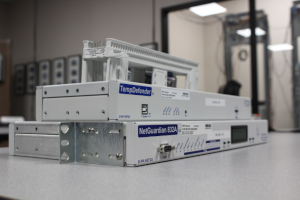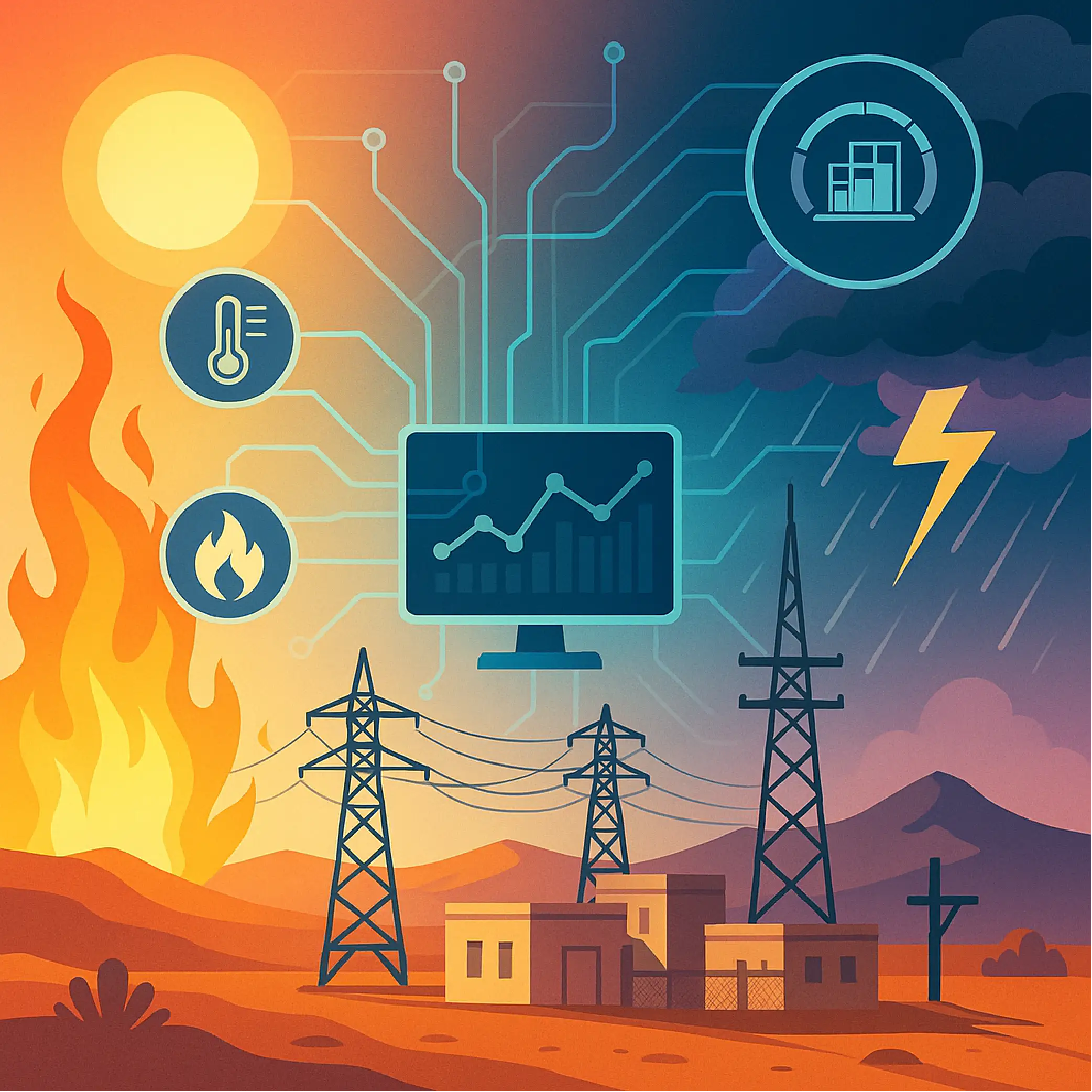Check out our White Paper Series!
A complete library of helpful advice and survival guides for every aspect of system monitoring and control.
1-800-693-0351
Have a specific question? Ask our team of expert engineers and get a specific answer!
Sign up for the next DPS Factory Training!

Whether you're new to our equipment or you've used it for years, DPS factory training is the best way to get more from your monitoring.
Reserve Your Seat TodayWe're about halfway through the summer of 2025, and all signs point toward another record-breaking year for energy demand - especially across the American Southwest.
T&D World mention in their recent article that Arizona Public Service (APS), one of the region's largest utilities, is forecasting a new all-time peak: up to 8,491 megawatts of demand. That's up from 8,210 MW, a record set only 11 months ago (last August).
Demand isn't the only thing that's rising. APS meteorologists are predicting above-average temperatures, increased monsoon activity, and elevated wildfire risk throughout the season. It's a worst-case combo: surging loads on an already stretched grid - plus extreme weather conditions that threaten critical infrastructure.
If you're a utility provider, a substation operator, or a telecom/SCADA engineer supporting power infrastructure, you can't afford to be caught unprepared.
This summer - and the next - your network must be smarter, faster, and more proactive than ever.

APS has made it clear that the summer of 2025 will test the durability and responsiveness of power grids (not only in Arizona, but across most of the US).
The 8,491 MW peak forecasted by APS is a direct response to growing populations, more air-conditioning demand, and the rising trend of electrification (think about all the EVs that must be recharged).
Without rock-solid visibility into every component of your network, even small failures can ripple into major outages.
To combat fire threats, APS has rolled out AI smoke detection, fire mesh protection, and increased vegetation management. They're also relying on Public Safety Power Shutoffs (PSPS) in high-risk counties.
But identifying fires early and shutting down systems safely requires real-time alerts and fast field coordination.
From lightning strikes to flash floods, monsoon storms can knock out service when your customers need it most. APS has addressed this by installing steel poles in key areas and adding smart grid devices to reroute power quickly.
If you're still relying on reactive monitoring, you're already behind. Many utilities face challenges because of:
In fire-prone or high-load zones, these limitations can become catastrophic. If your remote HVAC unit fails and your battery bank overheats during a PSPS-triggered shutdown, the failure may not be detected until the entire cabinet is offline.
And during a severe heatwave or storm, field access to some sites may be delayed. That's when automated visibility becomes mission-critical.
To survive any future summer like the one we're having in 2025, your utility network needs the following core capabilities:
Your HVAC status, generator runtime, fuel levels, AC mains, intrusion alarms, smoke and temperature should all be monitored remotely.
Fire mitigation tools like AI smoke detection, weather station feeds, and temperature/humidity sensors integrated directly into your remote telemetry network.
Your alarm remotes and controllers should integrate with your existing master station. That's true whether or not you use SCADA, SNMP, or a hybrid system. This also ensures there's no vendor lock-in or compatibility games.
Use a master alarm console like T/Mon LNX) to display alerts from all over your service territory in a single, intuitive view - with filtering, notification rules, and escalation logic.
Utilize gear like remotes, sensors, and HVAC controllers that survive extreme heat, power surges, and EMI. This prevents your network from being the weakest link during a crisis.
DPS Telecom has worked with utilities across North America for over 35 years. Our solutions are built for extreme conditions - from mountain-top microwave sites to desert substations and wildfire-prone transmission corridors.
The NetGuardian family of Remote Telemetry Units (RTUs) is your first line of defense.
From the compact NetGuardian DIN for small cabinets to the high-capacity NetGuardian 832A G6, every RTU is:
These aren't just boxes you bolt to a rack. They're reliable intelligence nodes that deliver visibility across your entire grid, even during extreme conditions.
For example, in a PSPS-designated fire zone, a NetGuardian RTU can report:
Just like those at your customers' buildings, your own remote-site HVAC units are working overtime this summer. The G6 HVAC Controller was built specifically for remote enclosures housing batteries, inverters, rectifiers, and telecom gear.
Standard thermostats aren't enough.
Here's what the G6 HVAC Controller provides:
Utilities using G6 units report longer HVAC lifespan, better energy efficiency, and fewer emergency dispatches due to unnoticed cooling failures.
During a summer where every watt and every degree counts, smart cooling control is important.
DPS's T/Mon is the master station that unifies everything.
You can collect, view, and act on alarms from hundreds/thousands of NetGuardians, environmental sensors, and third-party devices.
Key features include:
Whether you're managing a local co-op network or a large statewide utility infrastructure, T/Mon becomes (essentially) your central nervous system. It gives you real-time situational awareness and control during summer peaks.
APS has installed smart devices at strategic points on power lines to reroute power automatically, use AI to detect wildfire smoke within minutes, and deployed fire mesh and advanced weather modeling to improve prediction and response.
DPS supports similar initiatives with:
DPS equipment helps utility providers not just respond - but predict and prevent network interruptions.
2025 is likely only a preview of what's to come for us all:
These are not short-term problems. Still, with the right remote monitoring infrastructure, you can meet them head-on.
DPS Telecom is your partner in that mission. We build gear that's been field-proven for decades. Every NetGuardian RTU, HVAC Controller, and T/Mon master station is supported by our U.S.-based engineering and tech support team.
We don't make power-grid equipment. We don't make SCADA software. We specialize in mission-critical remote site monitoring and control.
You don't have to figure all of this out on your own.
Our team has helped hundreds of utility engineers and network managers:
Give us a call at 559-454-1600 or send an email to sales@dpstele.com.
We'll listen to your goals, show you real-world examples from utility projects just like yours, and help you design a system that fits your exact needs. You'll be on time, on budget, and ready for anything 2025 (or 2026, or 2027...) throws at you.

Andrew Erickson
Andrew Erickson is an Application Engineer at DPS Telecom, a manufacturer of semi-custom remote alarm monitoring systems based in Fresno, California. Andrew brings more than 19 years of experience building site monitoring solutions, developing intuitive user interfaces and documentation, and opt...